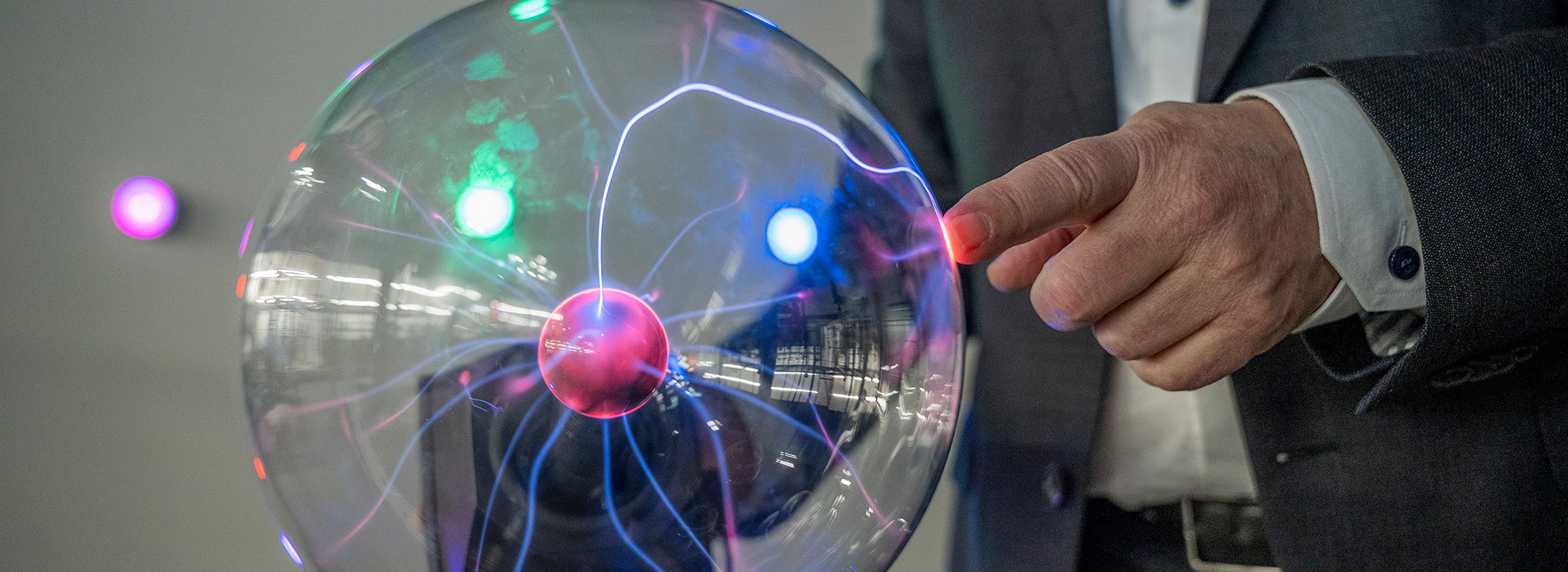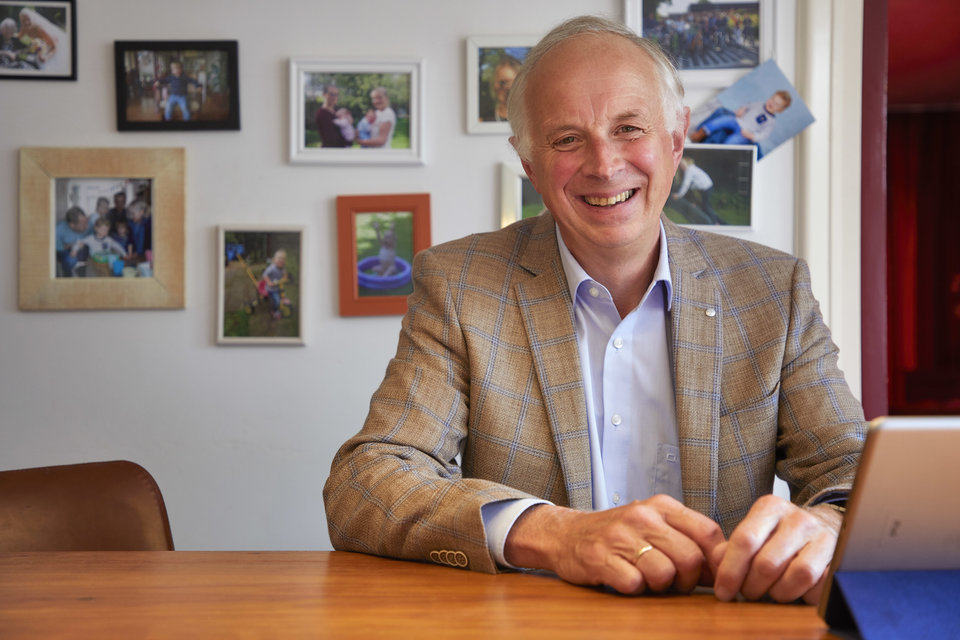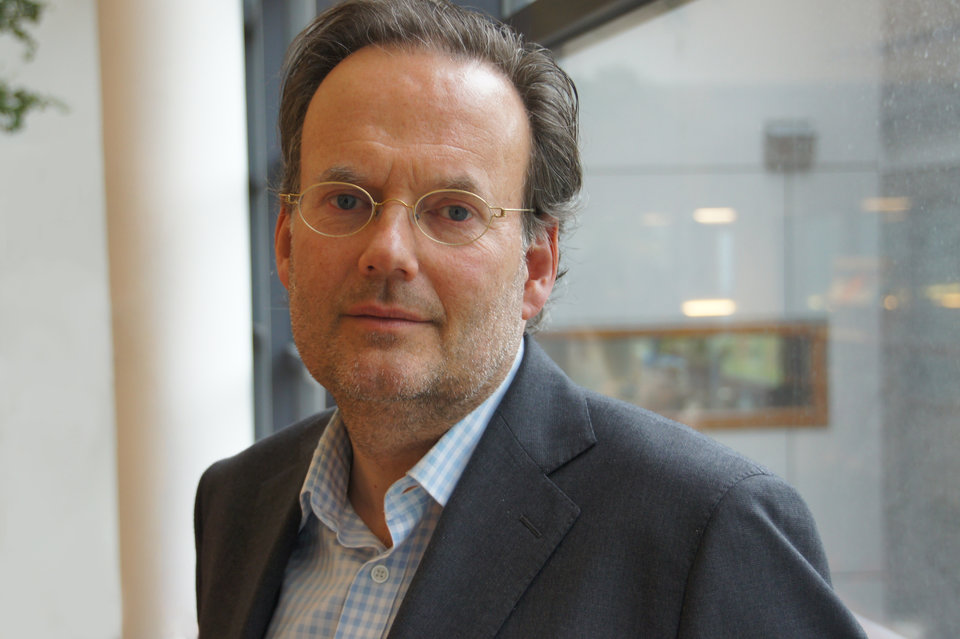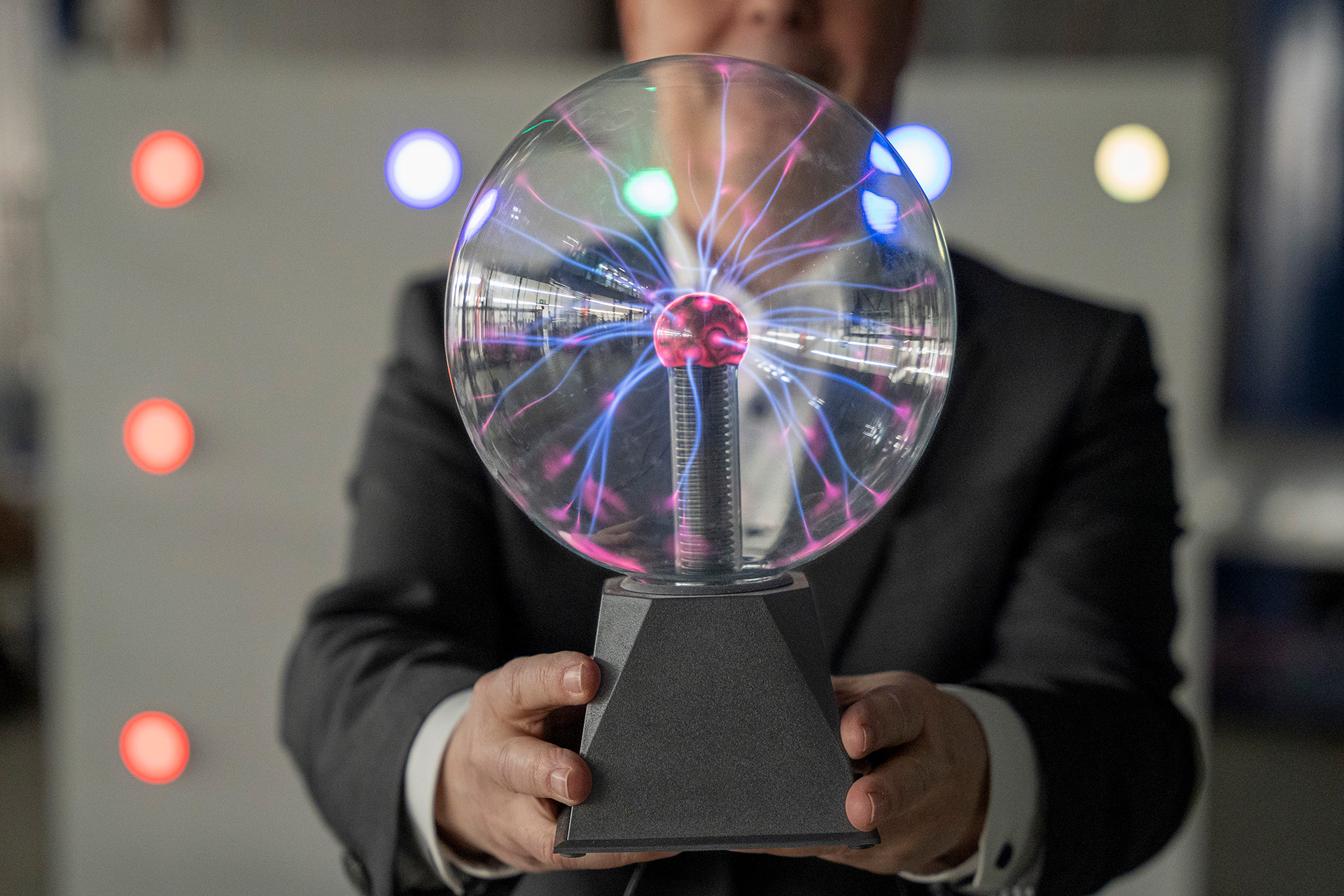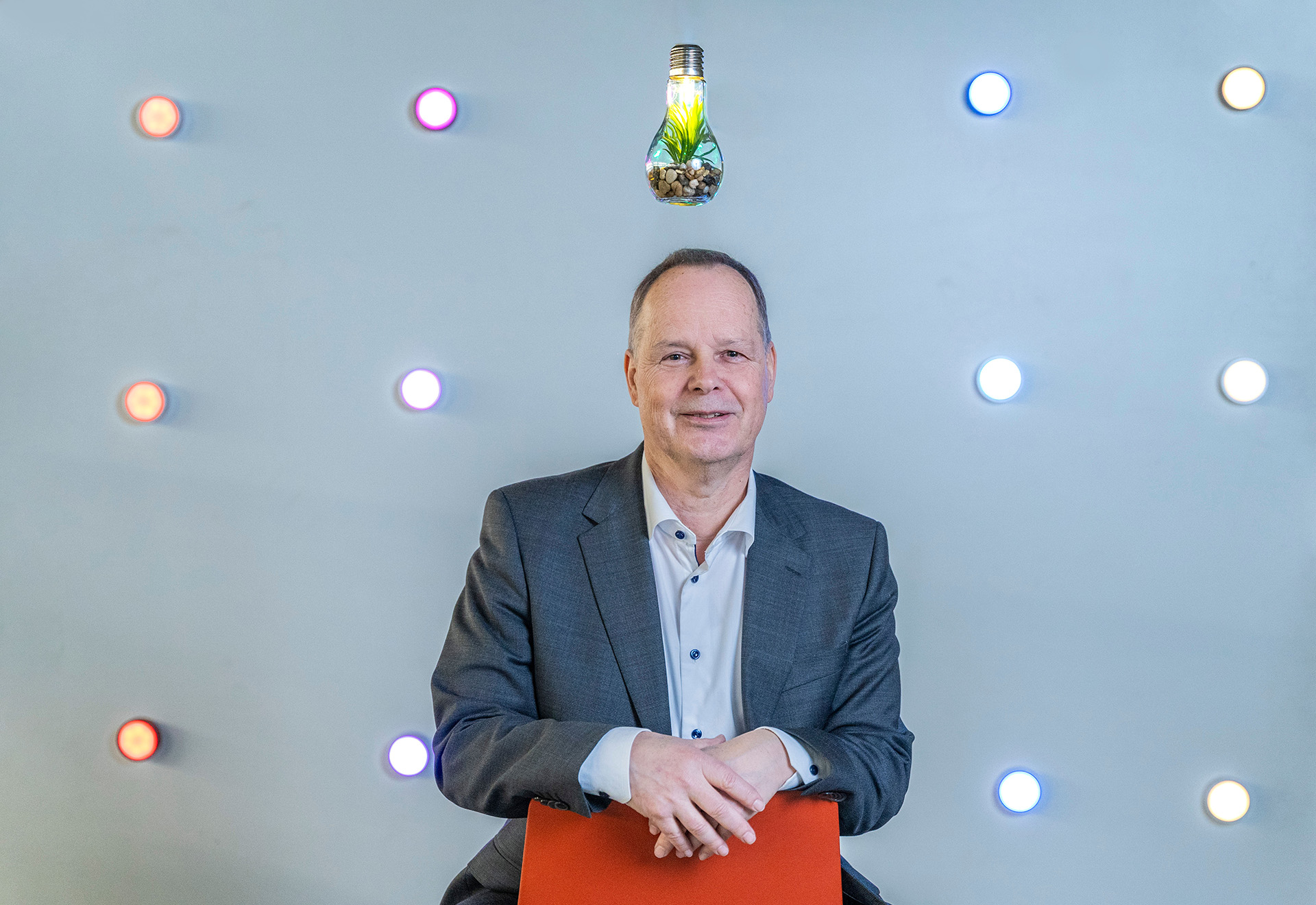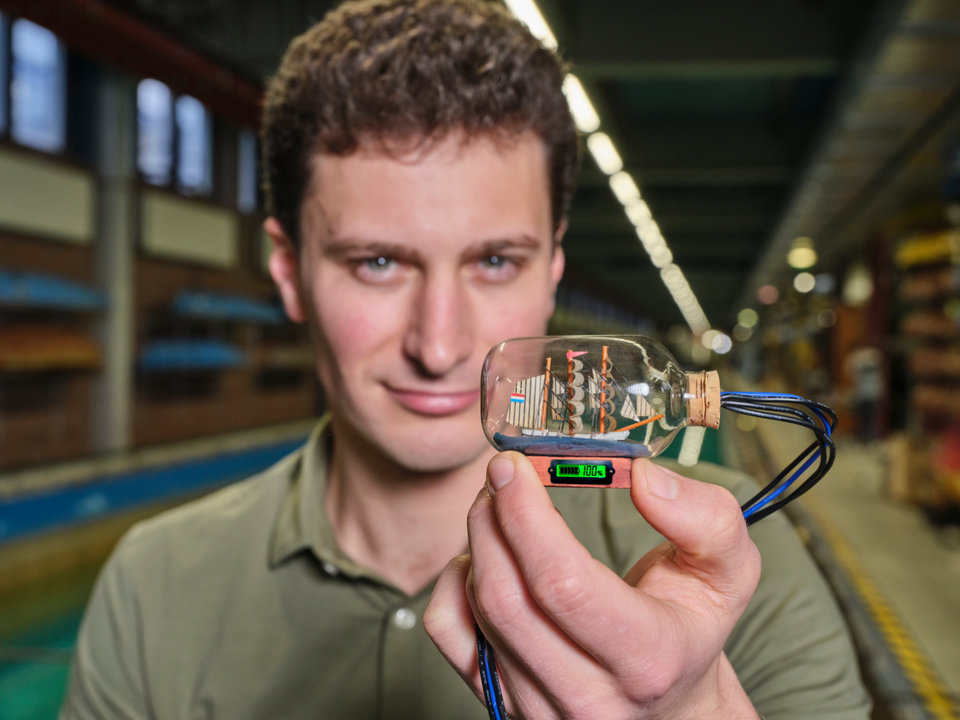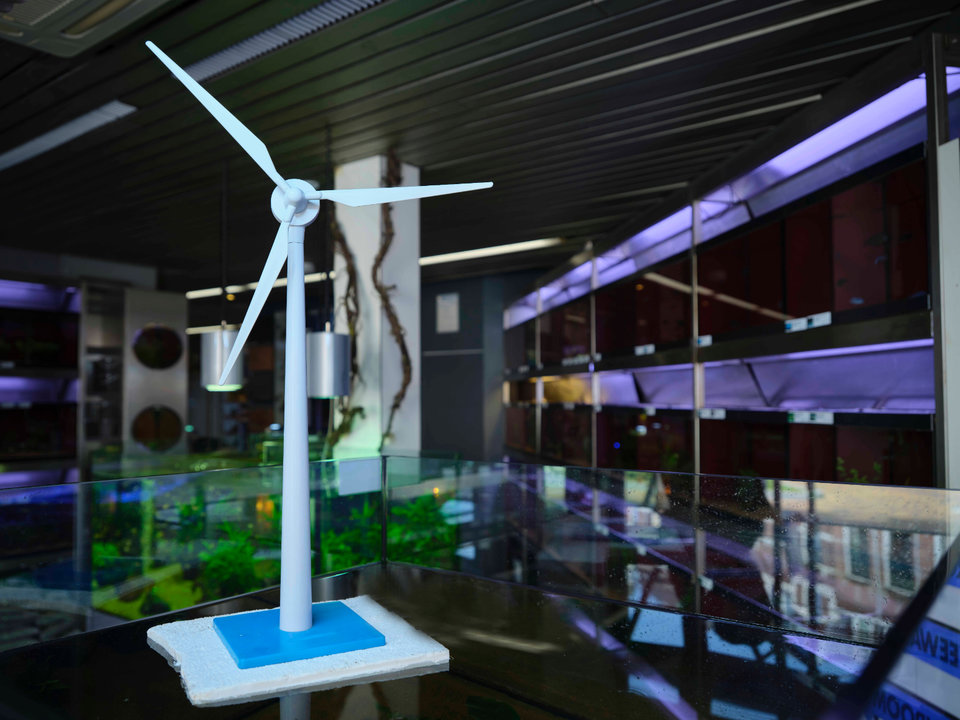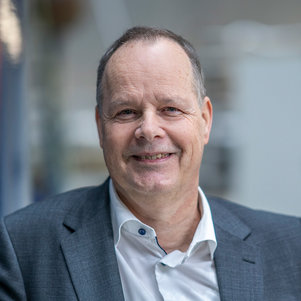the High Voltage Technologies Group
A while ago we thought it was no longer needed within TU Delft: a group entirely dedicated to maintaining and developing the use of high voltage. After all, the expectation was that the grid would become decentralised in the Netherlands, and that households would start generating their own electricity. This has partly become true, however, a vast amount of the renewable energy comes in large ‘chunks’, for example through offshore wind farms and large solar fields. "The fact is that we need high-voltage more than ever," Prof Peter Vaessen emphasizes. "This is also the reason we have a new, revived high-voltage group at TU Delft: the High Voltage Technologies Group."
Clear, understandable, and interactive images
"The purpose of the High Voltage Technologies Group (HVTG) is quite simple really," Peter - the head of the revived group - explains. "It is to prevent electrical breakdown in the high-voltage grid under all circumstances."
He explains this with an analogy. "You can actually think of the high-voltage grid as a big river - at altitude - through which the current flows and which is surrounded by dykes. Those tall dykes represent the high-voltage insulation that keeps the "water" neatly confined. If too much current starts to flow, it will spill over the dykes. And if the dykes become too weak and break, the insulation cracks. We make sure the dykes maintain their integrity." The group uses sensors, for example, to measure if cracks appear in the insulation. "This is how we measure whether water is seeping through the dyke, so to speak," Peter points out. "In the future, we will increasingly use artificial intelligence to analyse these measurements."
A significant part of the renewable energy generated comes from large-scale projects such as offshore wind farms and large solar plants. This large amount of green energy must be connected through the high voltage network, because low voltage alone will not work. Without high-voltage, we can forget about the energy transition.
The HVTG also explores which materials can best be used for insulation. Gases and mineral oils, for example, are used as insulation materials. For power transformers specifically, a lot of oil is used. A transformer is used to convert a high voltage, such as the grid voltage, to a lower voltage, for instance. "The oil that is used as insulation material for this purpose is not 'green'. That is why we are also researching bio-oils as insulation materials," Peter explains. The HVTG is committed to 'Greening the Grid'. They do this by using better, eco-friendly materials, and also by reusing materials and by using them for longer. "We want to know how long cables will last. We call this residual life determination," Peter points out. "By accurately determining exactly when to replace which materials, you can save a lot of material and money."
And the group also focuses on developing more compact insulation systems. "By making them as small as possible and through more compact construction, we can save material and space," Peter says. "But of course, the systems still have to work properly. That's why we also make sure to test and validate them."
Without high-voltage, we can forget about the energy transition
But, do we really need high-voltage in the context of the energy transition? In Peter's opinion, that's a fair question, and one he completely agrees with.. He points out that a significant part of the renewable energy generated comes from large-scale projects such as offshore wind farms and large solar plants. Because of fundamental physics principles, it's not feasible to connect such installations to the low-voltage grid, as this leads to excessively high current levels and significant energy losses. This large amount of green energy must be connected through the high voltage network, because low voltage alone will not work. "That is not possible," Peter stresses. "Without high-voltage, we can forget about the energy transition."
A renaissance is happening for high-voltage technology. A while ago, the general viewpoint was that energy production would spread to smaller, local sources and that households would produce their own energy. This picture has partly become reality. "But it is an illusion to think we are going to manage the energy transition by getting everyone to put solar panels on their roofs," Peter points out. "The reality is that the need for high voltage is greater than ever before." This is exactly why TU Delft has established a renewed high-voltage technology group. Worldwide, many high-voltage research labs have closed. "But fortunately, we still have this one at TU Delft," says Peter cheerfully.
'We have a dream'
"We have a dream within the HVTG that we want to realise one day," Peter explains. "And that is to have a universal, validated model, for any type of electrical breakdown, in combination with all forms of insulation material, for all possible voltages, currents and waveforms. That, of course, is the dream. That is our Holy Grail," Peter explains enthusiastically.
The HVTG is not there yet. High-voltage technology is a complicated field. It is a combination of electrical engineering, physics, mechanical engineering, chemistry, signal processing, and even going down to the molecular and atomic level. "That's why there is still a big technological challenge for us," Peter explains. "Namely that we can properly manipulate and synthesise the electric field. If you were to ask me to create an electric field that is as homogeneous as possible, and allows for the maximum amount of energy to flow through the cable - we still can't do that."
"I like to refer to it also as 'the art of high voltage technology'," says Peter. If you want to work in a profession where at one moment you are talking about electricity pylons as high as 70 metres, and at another moment you are talking about a single electron - which you cannot see - then you are at the right place within high-voltage technology. "Very small details often have gigantic consequences within our profession," Peter illustrates. "We are not the group that is going to develop the next quantum computer. But we do make sure it has power."
It is an illusion to think we are going to manage the energy transition by getting everyone to put solar panels on their roofs. The reality is that the need for high voltage is greater than ever before. This is exactly why TU Delft has established a renewed high-voltage technology group.
Saving huge sums with compact installations
Besides contributing to the energy transition, high-voltage research has other benefits. By developing more compact installations, a lot of money can be saved and earned.
"A TenneT offshore substation -which looks like a big yellow box in the water- costs about 2 billion euros," Peter points out. "And a square metre of space costs around 100.000 euros. When we manage to reduce a high-voltage installation to half of the space, we have made big bucks."
In the past, insulation distances have been determined for high-voltage lines, this determines the dimensions and land coverage. "We are now investigating if these requirements were perhaps set too generously in the past," Peter explains. "Because suppose you can gain 30% in space. That means you are talking about metres. That not only saves a lot of land coverage and material, but also an awful lot of money."
And determining the residual life of material, is not only more environmentally friendly, but it also allows the HVTG to save a lot of money. "Many components were put into the power grid in the 1970s," Peter explains. "These are now 50 years old, but can sometimes quite easily last another 20 or 30 years. If you can independently and thoroughly determine how long these components can still be used, it makes a huge difference, because the investments are of course also huge. I could actually list a hundred more examples where a lot of money and materials can really be saved."
Working together on a network of electricity superhighways
The HVTG collaborates with many different companies. "We work together with TenneT, the operator of the high-voltage grid in the Netherlands," Peter points out. TenneT has big plans to expand the high-voltage grid by 2045; they call it the Target Grid. They want to build a network of electricity superhighways and energy hubs in both Germany and the Netherlands. "That means there is definitely a lot of work for us as well," Peter explains. "Furthermore, we are, for example, also working together with distribution network companies, such as Stedin and Alliander."
And the HVTG also cooperates with KEMA Labs, where Peter also works part of the time. KEMA Labs is a global testing, inspection and certification company for components and systems for the electrical industry. KEMA Labs has the world's largest short-circuit laboratory in Arnhem, where for example, many types of high-voltage equipment can be tested under extreme conditions.
"And we work with many more (application-oriented) companies," says Peter, "such as with cable manufacturer Prysmian, and for example also with Royal SMIT Nijmegen, producer of power transformers. And we also cooperate with PLN , which is the national electricity company in Indonesia. We are open to a lot of collaborations, to have an impact on the energy transition together."
I enjoy passing on knowledge and love it when people are amazed. That is why I find it an honour to lead the HVTG. It is great to develop and expand this group to ensure that our work contributes to society.
In-flight engine replacement
"I hope that in 20 years, we will have figured out the energy transport and distribution for the energy transition," Peter explains. "And that we have also managed to keep the electricity grid stable. Because the electricity grid is like a plane that needs to be kept in the air. Within the energy transition, we are simultaneously replacing and expanding the engines, fuel, wiring, and steering. In fact, we are replacing everything at the same time, while the plane is flying. We cannot, unfortunately, just put things on hold. And the same goes for the energy transition."
"And I think in the future artificial intelligence is going to be used more and more within our profession," Peter says. "Especially for things like pattern recognition, analysing and diagnosing defects and interpreting measurement data."
Heart for engineering
"I have a heart for technology," Peter explains. "As a child, I wanted to try everything. I tinkered with all kinds of electronics myself. And I still belong to the category of people who hobbies in their garage and kitchen.
I enjoy passing on knowledge and love it when people are amazed. That is why I find it an honour to lead the HVTG. It is great to develop and expand this group to ensure that our work contributes to society. For me, this is really part of my fulfilment in life."
